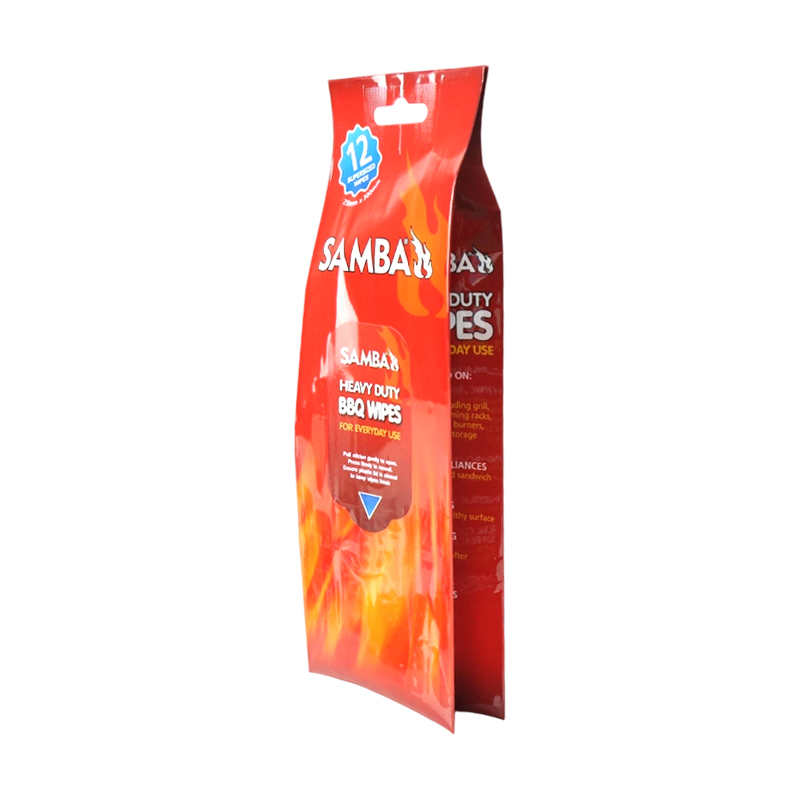2025-07-24
The packaging industry for wet wipes has witnessed significant advancements in recent years, with labeled wet wipe packaging bags emerging as a solution that caters to both manufacturers and consumers. These specialized packaging bags play a crucial role in preserving the quality and usability of wet wipes, offering improvements in sealing technology, material strength, and ease of use. As consumer demand for hygiene and convenience continues to rise, the wet wipe packaging market is evolving rapidly, driven by innovative design and materials that enhance product longevity and user experience.
The Importance of Packaging in Wet Wipes
Wet wipes are essential daily hygiene products used in households, healthcare, and industries such as food service and childcare. Because wet wipes are pre-moistened, maintaining their moisture content and preventing contamination is paramount. Packaging bags with reliable sealing mechanisms prevent evaporation, leakage, and microbial contamination, ensuring that wipes remain effective and safe throughout their shelf life.
In this context, labeled wet wipe packaging bags have gained prominence for their ability to combine product protection with clear branding and user-friendly features. Unlike generic packaging, labeled bags offer manufacturers a platform to communicate product benefits, usage instructions, and compliance information, which boosts consumer trust and loyalty.
Advanced Sealing Technology for Enhanced Freshness
One of the features of modern labeled wet wipe packaging bags is their sealing technology. Manufacturers are adopting heat-sealed or ultrasonic-sealed edges to create airtight seals that significantly reduce moisture loss. This is critical because once moisture escapes, the wipes dry out, rendering them ineffective.
Some packaging bags now incorporate resealable adhesive labels or zipper closures that allow users to open and close the package multiple times without compromising the airtight environment. These resealable options extend the product’s usable life and enhance convenience, especially for on-the-go consumers who might not use all wipes in a single session.
Material Innovation for Durability and Safety
Durability is another key factor influencing packaging bag design. Wet wipe bags must withstand physical handling, transportation stresses, and environmental exposure without tearing or puncturing. Innovations in multilayer films and composite materials have led to packaging that is both flexible and tough.
Many labeled wet wipe packaging bags use high-barrier films made from combinations of polyethylene (PE), polypropylene (PP), and sometimes ethylene vinyl alcohol (EVOH). These materials provide resistance to moisture, oxygen, and contaminants while also being lightweight and cost-effective. Some manufacturers are exploring biodegradable and recyclable materials to meet growing environmental concerns and regulatory requirements.

User-Centered Design for Convenience
User convenience is a driving force behind packaging evolution. The labeled wet wipe packaging bags are now designed to facilitate easy access and handling. Features such as peel-back labels, one-handed dispensing, and clear windows to show remaining wipes have become popular.
Clear labeling not only improves user experience but also assists in differentiating products in a crowded market. With health and hygiene a priority, manufacturers are also emphasizing hygienic dispensing mechanisms that reduce the risk of contamination during use.
Sustainability Trends in Wet Wipe Packaging
Sustainability is an increasingly important consideration in packaging design. Brands are seeking ways to reduce plastic waste and environmental impact while maintaining product performance. Some are integrating recycled content into packaging films, while others invest in compostable or biodegradable packaging alternatives.
Industry collaborations are fostering innovations such as refillable packaging systems, which reduce single-use plastic consumption by encouraging consumers to reuse durable outer packaging and simply refill wet wipes packs.
Market Impact and Future Outlook
The demand for labeled wet wipe packaging bags is growing alongside the expanding wet wipes market, which benefits from rising hygiene awareness and lifestyle changes. The baby care, personal hygiene, and healthcare segments are among the fastest-growing end users.
Looking ahead, manufacturers will continue to refine packaging materials and designs, leveraging nanotechnology, antimicrobial coatings, and smart labeling to further enhance functionality and consumer engagement. Integration with digital technologies, such as QR codes or NFC tags, can provide consumers with interactive product information and traceability, adding value beyond basic packaging.